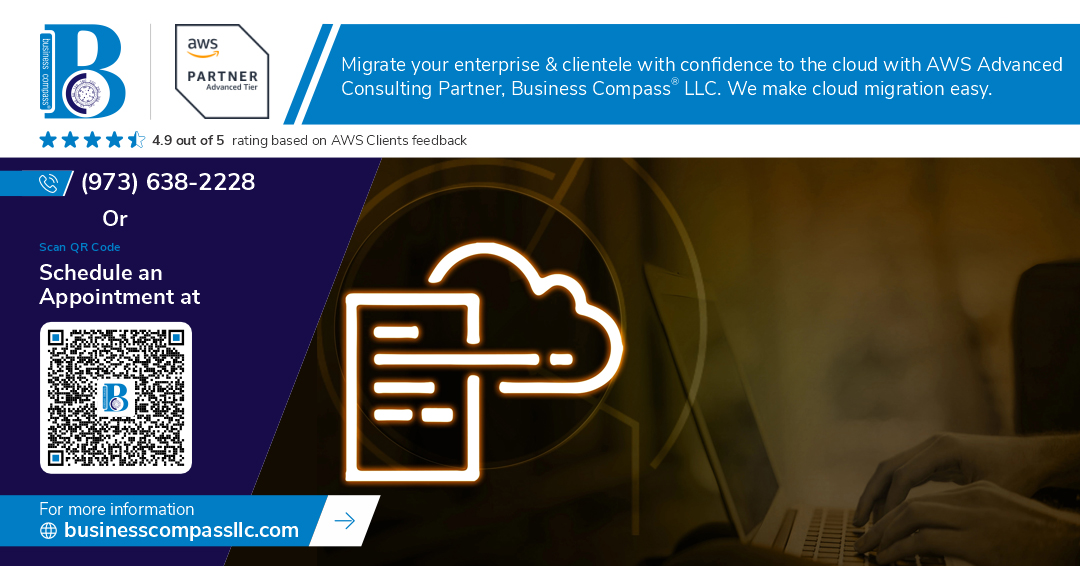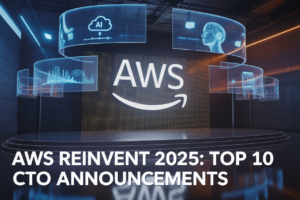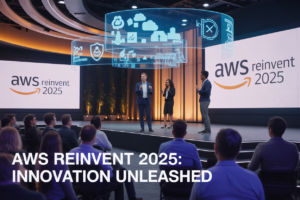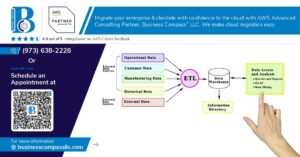Managing cloud resources manually is a productivity killer, especially when you’re dealing with dozens of AWS services that need constant attention. Serverless DevOps with AWS Lambda automation changes the game by letting you build smart workflows that handle resource lifecycle management without you babysitting every deployment, scaling event, or cleanup task.
This guide is for DevOps engineers, cloud architects, and development teams who want to stop wrestling with manual resource management and start building automated systems that actually work. You’ll learn how to create serverless architecture solutions that keep your infrastructure running smoothly while you focus on what matters most.
We’ll dive deep into AWS Lambda functions for automating everything from cloud resource provisioning to cleanup workflows. You’ll discover how to build robust serverless monitoring systems that catch issues before they become expensive problems. We’ll also cover automated cost management strategies that prevent those surprise AWS bills that make your CFO unhappy.
By the end, you’ll have practical devops automation workflows you can implement immediately, plus the aws devops best practices that separate amateur automation from production-ready systems.
Understanding Serverless DevOps and Resource Lifecycle Challenges
Traditional resource management pain points and inefficiencies
Manual resource provisioning creates significant bottlenecks in modern development cycles. Teams waste hours configuring servers, managing dependencies, and troubleshooting environment inconsistencies. Human error during manual deployments leads to costly downtime and security vulnerabilities. Traditional infrastructure requires constant maintenance, patching, and monitoring, diverting valuable developer time from core business logic. Resource scaling becomes reactive rather than proactive, resulting in over-provisioned resources during low demand periods and performance issues during traffic spikes.
Benefits of serverless architecture for DevOps automation
Serverless architecture transforms devops automation workflows by eliminating infrastructure management overhead. AWS Lambda functions execute code without server provisioning, automatically scaling based on demand while charging only for actual usage. Teams deploy applications faster through simplified packaging and deployment processes. Event-driven architectures enable seamless integration between services, creating robust aws lambda automation pipelines. Serverless platforms handle security patches, runtime updates, and availability automatically, reducing operational complexity. Development teams focus on building features rather than managing infrastructure, accelerating time-to-market for new applications and services.
Key components of resource lifecycle management
Resource lifecycle management encompasses four critical phases: provisioning, monitoring, scaling, and decommissioning. Provisioning involves creating resources based on application requirements and traffic patterns. Monitoring tracks performance metrics, error rates, and resource utilization across the entire stack. Scaling adjusts capacity dynamically based on real-time demand and predefined thresholds. Decommissioning removes unused resources to prevent cost accumulation. Infrastructure as code practices ensure consistent resource creation through versioned templates. Automated workflows orchestrate these phases seamlessly, reducing manual intervention and improving reliability across development, staging, and production environments.
Cost optimization opportunities through automated provisioning
Automated cost management through serverless platforms delivers substantial savings compared to traditional infrastructure models. Lambda’s pay-per-execution pricing eliminates costs for idle resources, while automatic scaling prevents over-provisioning. Scheduled automation functions can shutdown non-production environments during off-hours, reducing compute costs by up to 70%. Cloud resource provisioning through code enables consistent cost policies across teams and projects. Automated resource tagging and monitoring provide granular cost visibility, enabling data-driven optimization decisions. Serverless functions can analyze usage patterns and recommend right-sizing opportunities, creating continuous cost optimization feedback loops.
AWS Lambda Fundamentals for DevOps Automation
Core Lambda features that enable infrastructure automation
AWS Lambda’s serverless execution model eliminates server management overhead, allowing DevOps teams to focus on automation logic rather than infrastructure. The pay-per-execution pricing model makes automated workflows cost-effective, while automatic scaling handles varying workloads without manual intervention. Lambda’s 15-minute maximum execution time suits most DevOps tasks, from resource provisioning to configuration management. Built-in logging through CloudWatch provides comprehensive visibility into automation processes, making debugging and monitoring straightforward for serverless devops initiatives.
Event-driven architecture for resource management
Lambda functions trigger automatically based on AWS service events, creating responsive resource lifecycle management systems. CloudWatch Events schedule routine maintenance tasks like backup creation and log rotation, while S3 events can trigger data processing workflows when new files arrive. API Gateway integration enables webhook-based automation, allowing external systems to trigger aws lambda automation workflows. DynamoDB streams capture data changes in real-time, enabling immediate responses to configuration updates. This event-driven approach reduces manual intervention while ensuring timely responses to infrastructure changes.
Integration capabilities with AWS services and APIs
Lambda integrates natively with over 200 AWS services through SDKs and APIs, enabling comprehensive resource lifecycle management across the entire cloud ecosystem. The service connects seamlessly with EC2 for instance management, RDS for database operations, and S3 for storage automation. IAM roles provide secure, temporary credentials for cross-service interactions without hardcoded secrets. Third-party API integration through HTTP requests extends automation beyond AWS boundaries, connecting to external monitoring tools, ticketing systems, and deployment platforms. This extensive connectivity makes Lambda the central orchestration point for complex devops automation workflows spanning multiple services and platforms.
Building Automated Resource Provisioning Workflows
Infrastructure as Code integration with Lambda functions
AWS Lambda functions seamlessly integrate with infrastructure as code tools like CloudFormation, Terraform, and AWS CDK to automate resource provisioning. Lambda can trigger infrastructure deployments, validate resource configurations, and execute post-deployment tasks. By embedding Lambda functions within CloudFormation templates or Terraform modules, you create self-healing infrastructure that responds to configuration changes automatically. This serverless devops approach ensures consistent deployments across environments while reducing manual intervention and human error in resource lifecycle management workflows.
Dynamic resource scaling based on demand patterns
Lambda functions excel at implementing intelligent scaling decisions by analyzing CloudWatch metrics, application logs, and custom business metrics. These functions can automatically adjust Auto Scaling Group sizes, modify RDS instance classes, or provision additional ECS tasks based on real-time demand patterns. Machine learning algorithms within Lambda can predict traffic spikes and pre-scale resources before demand increases. This proactive scaling approach optimizes performance while minimizing costs through precise resource allocation based on actual usage patterns.
Multi-environment deployment automation
Serverless architecture enables sophisticated multi-environment deployment pipelines where Lambda functions orchestrate promotions between development, staging, and production environments. These functions can validate environment-specific configurations, execute database migrations, and coordinate blue-green deployments across multiple AWS regions. Lambda-based deployment automation ensures consistent application behavior across all environments while maintaining proper isolation and security boundaries. Environment-specific parameters are dynamically injected through AWS Systems Manager Parameter Store or AWS Secrets Manager.
Error handling and rollback mechanisms
Robust error handling in Lambda-based provisioning workflows includes comprehensive logging, dead letter queues, and automatic rollback capabilities. When resource provisioning fails, Lambda functions can trigger CloudFormation stack rollbacks, restore database snapshots, or revert to previous application versions. Circuit breaker patterns prevent cascading failures across dependent resources. Lambda functions monitor deployment health checks and automatically initiate rollback procedures when predefined failure thresholds are exceeded, ensuring system stability and minimizing downtime during failed deployments.
Implementing Resource Monitoring and Health Checks
Real-time resource status tracking with CloudWatch integration
AWS Lambda functions seamlessly integrate with CloudWatch to monitor serverless architecture health in real-time. Lambda functions can automatically collect metrics from EC2 instances, RDS databases, and other AWS services, pushing custom metrics and logs to CloudWatch dashboards. This serverless devops approach enables continuous resource lifecycle management through automated data collection, eliminating manual monitoring overhead while providing comprehensive visibility into infrastructure performance and availability across your entire cloud environment.
Automated alerting for resource anomalies and failures
Smart alerting systems built with aws lambda automation detect resource anomalies before they become critical issues. Lambda functions process CloudWatch alarms and SNS notifications to trigger immediate responses when CPU usage spikes, disk space runs low, or services become unresponsive. These serverless monitoring solutions can automatically restart failed instances, scale resources up or down, and notify DevOps teams through Slack, email, or PagerDuty integrations, ensuring rapid incident response and minimal downtime.
Performance metrics collection and analysis
Advanced performance analytics powered by Lambda functions aggregate data from multiple sources to create comprehensive resource health profiles. These devops automation workflows collect application logs, system metrics, and user behavior data, processing them through Lambda functions that calculate trends, identify bottlenecks, and predict capacity needs. The serverless approach to metrics analysis enables real-time decision-making while reducing infrastructure costs compared to traditional monitoring solutions running on dedicated servers.
Automating Resource Cleanup and Cost Management
Scheduled resource decommissioning for unused assets
AWS Lambda functions can automatically identify and terminate idle resources through scheduled workflows. Create Lambda functions that scan for EC2 instances, RDS databases, and EBS volumes with low utilization metrics over specific timeframes. These serverless devops automation scripts check CloudWatch metrics, compare against predefined thresholds, and safely shut down resources during off-peak hours. Integration with AWS Systems Manager allows for graceful application shutdowns before resource termination, preventing data loss while maximizing cost savings.
Automated tagging and resource categorization
Resource tagging automation ensures consistent cost tracking and governance across your AWS environment. Lambda functions can automatically apply tags based on resource attributes, deployment patterns, or organizational policies. These aws lambda automation scripts read resource metadata, apply standardized tags for cost centers, environments, and owners, then update billing reports accordingly. Custom tagging strategies help categorize resources by project lifecycle, enabling precise cost allocation and simplified resource management across different teams and departments.
Cost threshold monitoring and budget enforcement
Real-time cost monitoring through Lambda functions provides proactive budget management and prevents unexpected billing surprises. Set up CloudWatch Events to trigger Lambda functions when spending approaches predefined thresholds. These functions can automatically disable non-critical resources, send notifications to stakeholders, or implement spending controls. Integration with AWS Budgets API allows for dynamic threshold adjustments based on usage patterns, ensuring automated cost management aligns with business requirements while maintaining operational efficiency.
Orphaned resource detection and removal
Orphaned resources represent significant cost drains in cloud environments, making automated detection essential for effective resource lifecycle management. Lambda functions can identify unattached EBS volumes, unused Elastic IPs, abandoned load balancers, and disconnected network interfaces. These serverless monitoring solutions cross-reference resource dependencies, identify truly orphaned assets, and safely remove them after confirmation periods. Regular cleanup schedules prevent resource accumulation and maintain lean, cost-effective infrastructure without manual intervention.
Security and Compliance Automation
Automated Security Policy Enforcement Across Resources
AWS Lambda functions serve as powerful enforcement engines for security policies across your cloud infrastructure. You can create serverless automation workflows that continuously scan resources for compliance violations, automatically remediate security gaps, and enforce organizational standards. These Lambda-based systems monitor IAM policies, security group configurations, and resource tags, triggering immediate corrective actions when deviations occur. By integrating with AWS Config and CloudTrail, your serverless DevOps pipeline maintains consistent security posture without manual intervention, ensuring every resource adheres to predefined security baselines and industry standards.
Compliance Auditing and Reporting Mechanisms
Serverless architecture excels at building comprehensive compliance auditing systems that operate at scale without infrastructure overhead. Lambda functions can automatically generate compliance reports by scanning resources against frameworks like SOC 2, HIPAA, or PCI DSS requirements. These automated auditors collect evidence, document findings, and create detailed reports for stakeholders and auditors. The system can schedule regular compliance checks, track remediation progress, and maintain historical audit trails, providing complete visibility into your organization’s compliance status through automated reporting mechanisms that reduce manual effort and human error.
Access Control and Permission Management Automation
Permission management becomes streamlined through AWS Lambda automation that dynamically adjusts access controls based on business rules and security requirements. These serverless functions can automatically provision user accounts, assign appropriate roles, and revoke access when conditions change. The system monitors access patterns, detects anomalous behavior, and implements least-privilege principles by continuously adjusting permissions. Integration with identity providers enables automated onboarding and offboarding workflows, while real-time monitoring ensures access controls remain aligned with organizational policies and regulatory requirements throughout the resource lifecycle management process.
Best Practices and Implementation Strategies
Lambda Function Optimization for Resource Management Tasks
Optimize your AWS lambda functions for resource management by setting appropriate memory allocations between 512MB and 1GB for most DevOps automation workflows. Configure timeout values strategically – use 5-10 minutes for provisioning tasks and 1-2 minutes for monitoring checks. Reserve concurrency for critical serverless devops operations to prevent throttling during peak resource management activities. Package dependencies efficiently using Lambda Layers to reduce cold start times and deployment sizes. Implement connection pooling for database operations and reuse AWS SDK clients across function invocations to minimize initialization overhead.
Error Handling and Retry Logic for Robust Automation
Build resilient aws lambda automation with exponential backoff strategies for transient failures. Implement dead letter queues (DLQ) to capture failed resource lifecycle management operations for manual review. Use AWS Step Functions for complex devops automation workflows requiring multiple retry attempts with different strategies. Configure CloudWatch alarms to trigger alternative execution paths when primary automation fails. Create circuit breaker patterns that temporarily disable failing components while maintaining overall system stability. Log detailed error context including resource identifiers and operation types to accelerate troubleshooting.
Testing and Validation Frameworks for DevOps Workflows
Deploy comprehensive testing strategies for your serverless architecture using AWS SAM local for offline development and testing. Create unit tests for individual Lambda functions using frameworks like pytest or Jest, mocking AWS services with tools like moto or aws-sdk-mock. Implement integration tests that validate end-to-end devops automation workflows in isolated environments. Use AWS CloudFormation or Terraform for infrastructure as code testing with temporary stacks. Establish contract testing between microservices and validate resource provisioning outcomes. Automate security scanning with tools like Bandit or ESLint security plugins integrated into your CI/CD pipeline.
Monitoring and Troubleshooting Automation Pipelines
Establish comprehensive observability for your aws devops best practices using CloudWatch Logs Insights for pattern analysis and anomaly detection. Create custom metrics for resource provisioning success rates, execution duration, and cost tracking. Implement distributed tracing with AWS X-Ray to visualize request flows across your serverless monitoring infrastructure. Set up automated alerting for failed provisioning attempts, resource drift detection, and budget threshold breaches. Use CloudWatch Dashboards to visualize automation pipeline health and performance metrics. Enable VPC Flow Logs and CloudTrail for security auditing and compliance tracking across your automated cost management systems.
AWS Lambda transforms how we handle resource lifecycle management by automating the tedious tasks that usually eat up DevOps teams’ time. From spinning up new resources to monitoring their health and cleaning up what’s no longer needed, Lambda functions can handle it all while keeping costs under control. The automated security checks and compliance monitoring mean you’re not just saving time – you’re also reducing the risk of human error that could leave your infrastructure vulnerable.
Start small with one automation workflow, maybe resource cleanup or basic monitoring, and build from there. The beauty of serverless DevOps lies in its pay-as-you-go model and the fact that you don’t need to manage the underlying infrastructure. Your team can focus on what really matters – delivering value to your users – while Lambda takes care of the operational heavy lifting in the background.




















